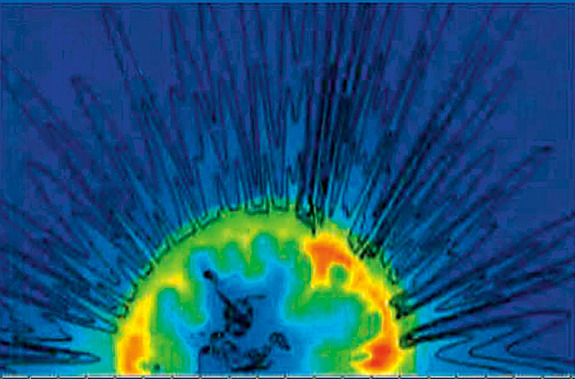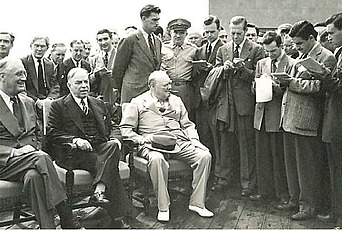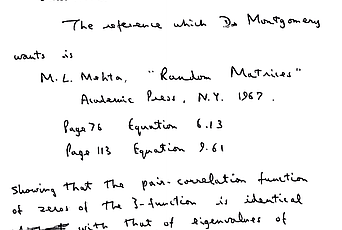How Do You Know a Nuclear Weapon Works If You Can't Test It?

In 1987, in my third year as a graduate student in anthropology, I arrived in the small California town of Livermore, host to one of two nuclear weapons design laboratories in the United States. Thanks to an indulgent dissertation committee, which had allowed me to abandon my original goal of doing fieldwork in Africa for a much more unconventional project, I came to Livermore intent on understanding the culture of the scientists, mainly physicists, who worked on the most powerful weapons on Earth. The anthropology of science did not yet exist as a recognized sub-field of anthropology but, in retrospect, that is what I was doing.
I came to Livermore at a moment when the nuclear weapons labs at Livermore and Los Alamos were on the defensive. The nuclear freeze campaign of the early 1980s had had some success in reframing the nuclear arms race as a danger to, not a guarantor of, security. “End the race or end the race,” as their slogan went. In 1982, more than a thousand protestors were arrested for civil disobedience at the gates of the Livermore Laboratory. Then, in 1985, the new Soviet leader, Mikhail Gorbachev, suspended Soviet nuclear testing for eighteen months, challenging the United States to join him. And at the Reykjavik Summit of 1986, Ronald Reagan and Mikhail Gorbachev astonished the world by coming close to an agreement to abolish nuclear weapons.
In this context, there was mounting pressure to end nuclear testing. No arms control measure could have been more damaging to the Livermore Laboratory since its main product was not nuclear weapons but nuclear tests. (After a round of tests fixed the final design, the weapons were manufactured elsewhere.) The Laboratory argued that continued nuclear testing was imperative since it would be impossible to be sure that aging nuclear weapons were reliable if they could not be tested. The one public dissenter within the Laboratory was Ray Kidder, a veteran weapons designer and pioneer of laser fusion, who wrote a report for Congress arguing that stockpile reliability could be assured through the judgment of experienced designers and the remanufacture of weapons as they aged out.
The debate was simultaneously political and technical, and the weapons laboratories won it in the late 1980s, when I was doing my fieldwork. But the political momentum for nuclear testing weakened when the Cold War ended in 1989 and the Soviet Union fell apart in 1991. There was no longer a need for new nuclear weapons, and many countries without nuclear weapons were now pressing the nuclear powers to end testing as a way of honoring their 1970 pledge of “cessation of the nuclear arms race at an early date” in Article VI of the Nonproliferation Treaty. As I became an assistant professor in 1992, the George H. W. Bush administration was maneuvered into signing off, reluctantly, on a moratorium on nuclear testing co-sponsored by Republican Senator Mark Hatfield. He cunningly attached the moratorium to the funding bill for the Superconducting Supercollider in Texas, which President Bush believed he needed in order to carry Texas in the 1992 presidential election. (In the end, he lost both Texas and the election, as well as nuclear testing.)
The moratorium allowed up to fifteen nuclear tests to optimize the stockpile for a permanent ban on nuclear testing. Bill Clinton’s Secretary of Energy Hazel O’Leary worried that the fifteen tests would prove a backdoor into a permanent resumption of nuclear testing. She convened a two-day meeting in Washington, D.C., May 17–18, 1993, to which she invited the directors of the weapons labs and their key scientific advisers to make their case that more tests were needed to assure the reliability of the stockpile. They brought with them a full-size mock-up of a nuclear weapon sliced in half so they could give the new secretary a tutorial on weapons design. To the lab directors’ consternation, O’Leary also invited three leading physicists who were advocates of a test ban to argue it out with the managers of the weapons labs while she watched. The three independent physicists were Ray Kidder of Livermore; Sid Drell, the former Director of the Stanford Linear Accelerator Center (and currently Institute Trustee Emeritus); and Frank von Hippel of Princeton, who was rushed a security clearance in one day so he could attend. I have interviewed ten people who were at that meeting, including the secretary of energy herself. The accounts diverge in interesting ways, but all agree that the meeting went badly for the lab directors. Finally, in the afternoon of the second day, one of the directors volunteered that the weapons labs could find a way to keep the stockpile reliable if they were given the same resources not to test as they had enjoyed when they did test.
Thus, U.S. nuclear testing was ended for good and a program called Stockpile Stewardship was born. The budget for the Stockpile Stewardship program was initially $4.5 billion a year, but has now grown to over $8 billion a year. Under this program, the most powerful laser in the world, the National Ignition Facility, was built at Livermore; a device for exploring the implosion dynamics of nuclear weapons, the Dual-Axis Radiographic Hydrodynamic Test Facility, was built at Los Alamos; a pulsed power facility, the Z machine, was built at Sandia, the engineering support laboratory for Livermore and Sandia; Livermore and Los Alamos were allowed to keep using the Nevada Nuclear Test Site for underground experiments with plutonium that stopped short of a nuclear explosion; and the laboratories obtained some of the most powerful supercomputers in the world on which they could simulate nuclear tests. This set of experimental and computing facilities has enabled the weapons labs to better understand the basic physics of nuclear weapons, and to recruit and train a new generation of nuclear weapons scientists. Senior managers at Livermore and Los Alamos have explained to me in numerous interviews over the years that, in the final analysis, the reliability of the stockpile rests on the expert judgment of American nuclear weapons scientists, and that stockpile stewardship offers a way to build and test that judgment in the way that nuclear testing did in a previous era.
Interestingly, that line of argument has been contested by … Ray Kidder. (Kidder has been joined in his critique by Richard Garwin, an influential physicist who has consulted for the nuclear weapons programs for years.) When Kidder argued for an end to nuclear testing in 1992, he envisaged a new set of arrangements, more like the approach the Russians would adopt, in which aging nuclear weapons would be replaced by identical copies that hewed to tried and tested designs. Instead, under the stewardship program, aging weapons evolve as they are refurbished under the supervision of weapons scientists whose judgment is said to guarantee their continuing reliability.
The last time I went to Livermore, the weapons designers I spoke to said they had great confidence in the reliability of the stockpile based on the convergence of stockpile stewardship experiments and supercomputer codes, and on high levels of intersubjective agreement among weapons designers. As I got a tour of the National Ignition Facility, I noticed a big banner that said “stockpile stewardship is working!” But how do we know? And what might an anthropologist contribute to an understanding of these issues?
Anthropologists who study scientists sometimes foreground the social implications of scientific controversies that may be less apparent to scientists inside those controversies, or they might ask why a debate is framed in a particular way, or they might commit to writing concerns confided quietly to an anthropologist that scientists are reluctant to voice in public. In my writing about Livermore, I have been struck by the agility with which one of the largest scientific institutions in the world could adapt to losing its central experimental practice—nuclear testing—and by the way it was able to move in a single decade from insisting that nuclear testing was essential to demonstrating the reliability of nuclear weapons to saying it was not, building an internal staff consensus around a 180-degree shift in position. I have also argued that during the Cold War, nuclear testing was not just a way of securing scientific and technical claims, but also an essential mechanism for regulating social hierarchies within the laboratory where people were tested as much as weapons and where testing was the locus of apprenticeship. Through stockpile stewardship, Livermore has found new modes of apprenticeship and new ways of establishing hierarchies of expert judgment within the laboratory.
In the end, I keep coming back to the question of how you know a weapon works if you cannot test it. (Or, for that matter, how testing ever established reliability since it destroyed the object whose reliability it demonstrated.) Who am I to question the judgment of the physicists who have spent decades honing their expert knowledge of this arcane field? Still, I keep thinking of a conversation I had in 1995 with a senior weapons designer, now retired, who told me that an inexperienced designer with a code is like a drunk driver, wrongly convinced of their excellent judgment. And I cannot help but notice a 2012 Department of Energy report complaining that National Ignition Facility shots were not producing the energy levels predicted by simulation codes. Nor, in 2015, has the National Ignition Facility met its former director’s prediction of reaching ignition—getting more energy out than was put in—by late 2012.
But maybe, as my Institute colleagues reminded me when I spoke on these matters in an After Hours talk, what really matters is not whether a nuclear weapon really works but whether we believe it does.

